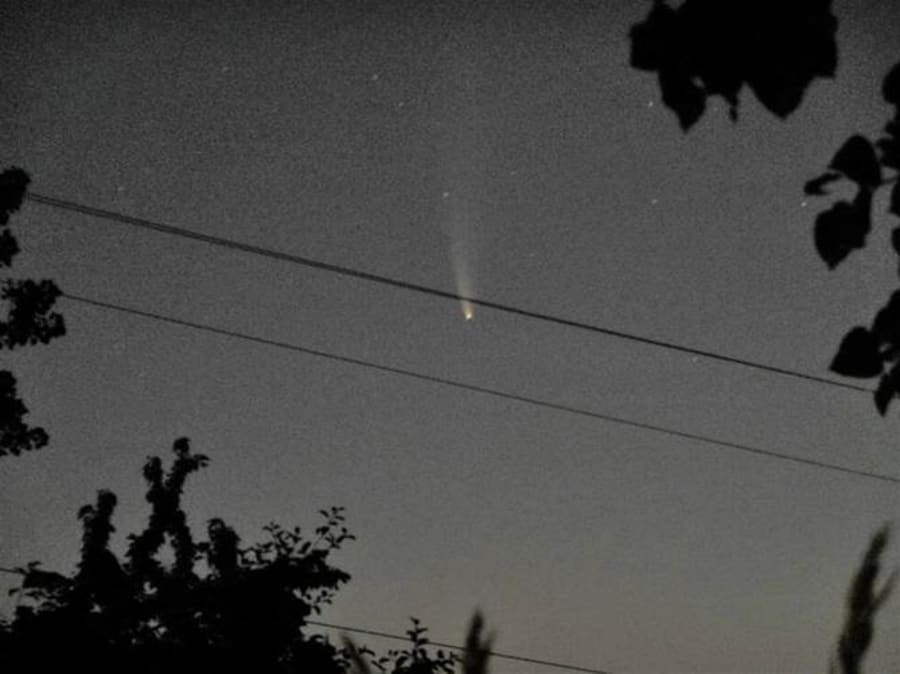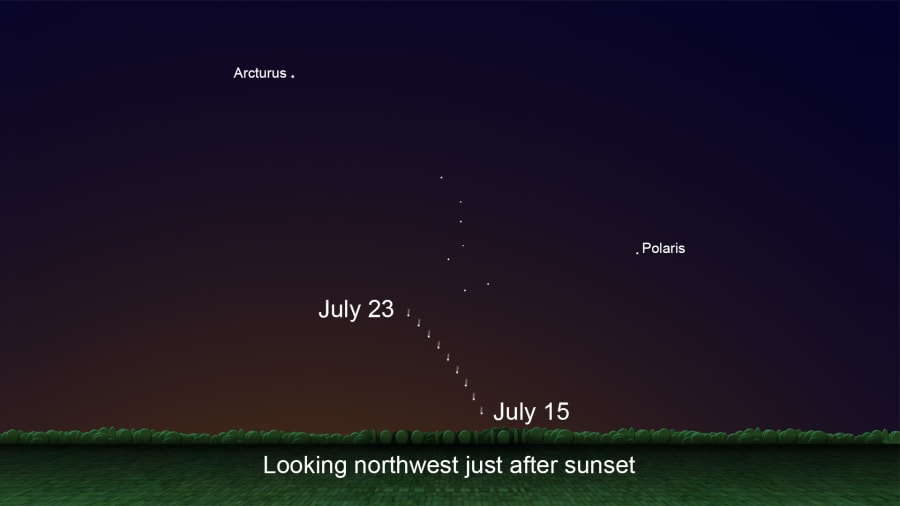Comets are the ultimate heavenly highlight for me, because they are pristine, big chunks of dust, ice and gases left over from the formation of our solar system!
We don’t see comets too often so, when we get the chance, it’s pretty special.
As comets get closer to the sun, some of the ice melts and gases in the comet sublimate. So, as the comet streaks through space, dust and gas form a ball around the nucleus (called the coma), and the tail that we see (actually, most comets have two tails -- one dust tail, and one gas tail, which is the more difficult one to see).
Here’s a nice shot of Comet NEOWISE, shot this past weekend by Mike Thompson in White Lake, Mich. Keep in mind that this is a fifteen second exposure -- it’s not what you’d see with the naked eye:

Comet NEOWISE is not what we scientists call a “Great Comet.” In other words, it’s not so bright that it can be seen prominently in the sky with the naked eye. However, if you live in an area with dark skies, you should be able to see it faintly. It’s really cool, but using binoculars will make it really special!
Until now, to see Comet NEOWISE you had to get up at 5 a.m. And I know a LOT of people who will never get up at 5 a.m. Not even for a comet. However, I have good news: Over the next week, NEOWISE will transition to an evening object! So where do you look? Fortunately, there is a very well-known constellation that you can use as a guide. I show you where and when to look in this video:
Start looking around 9:45 or 10:00 p.m. and, by this week, it should be high enough for most of us to see, unless you have a lot of trees or buildings blocking your view of the northwest. Try to get away from city lights and to a place with dark skies! And if you miss Comet NEOWISE this time, don’t worry -- it’ll be back in 6,800 years.
Here’s this awesome NASA skychart showing the location of NEOWISE just after sunset, July 15 through 23:

And here’s something special for you. Ever wonder what a comet looks like up close and personal? Well, there’s a spacecraft for that. It’s name is Rosetta, and it flew to Comet 67P, orbited it, and then deployed a lander, named Philae, onto the surface! Here are a couple of photos of Comet 67P -- one from Rosetta in orbit, and another from Philae on the surface!





